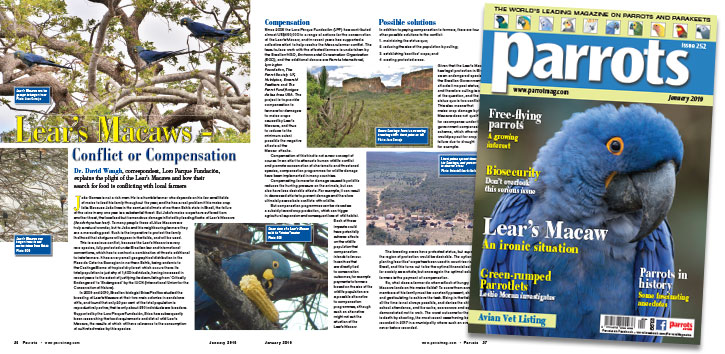
Dr. David Waugh, correspondent, Loro Parque Fundación, explains the plight of the Lear’s Macaws and how their search for food is conflicting with local farmers
João Gomes is not a rich man. He is a humble farmer who depends on his few small fields of maize to feed his family throughout the year, and he has a real problem if his maize crop fails. Because João lives in the semi-arid climate of northern Bahía state in Brazil, the failure of the rains in any one year is a substantial threat. But João’s maize crops have suffered from another threat, the localised but tremendous damage inflicted by feeding flocks of Lear's Macaws (Anodorhynchus leari). To many people these all-blue Macaws are truly a natural wonder, but to João and his neighbouring farmers they are a marauding pest. Such is the imperative to protect the family livelihood that shotguns will appear in the fields, and will be used.
This is a serious conflict, because the Lear's Macaw is a very rare species, fully protected under Brazilian law and international conventions, which has to confront a combination of threats additional to irate farmers. It has a very small geographical distribution in the Raso da Catarina Ecoregion in northern Bahía, being endemic to the Caatinga Biome of tropical dry forest which occurs there. Its total population is just shy of 1,400 individuals, having increased in recent years to the extent of justifying its down-listing from ‘Critically Endangered’ to ‘Endangered‘ by the IUCN (International Union for the Conservation of Nature).
Buy Now!
